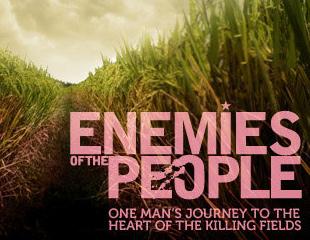International Film Circuit – the top notch indie sized doc film distributor (they also do features – Shotgun Stories, etc.) have picked up the distribution rights to a film I missed out on at Sundance, but under different circumstances would have wanted to have seen. Rob Lemkin’s and Thet Sambath’s Enemies of the People – is a cold hard look into the past, more specifically a portrait of those involved in the Khmer Rouge genocide. Not exactly sun, fun and the beach feel good doc of the summer – but by the short trailer below, I’d say this prize winning doc is a definite watch. If anyone has seen the doc, let us know what your impressions were below.
The Khmer Rouge ran what is regarded as one of the twentieth century’s most brutal regimes. Yet the Killing Fields of Cambodia remain unexplained. Until now. In ENEMIES OF THE PEOPLE the men and women who perpetrated the massacres – from the foot-soldiers who slit throats to the party’s ideological leader, Nuon Chea aka Brother Number Two – break a 30-year silence to give testimony never before heard or seen. Unprecedented access from top to bottom of the Khmer Rouge has been achieved through a decade of work by one of Cambodia’s best investigative journalists, Thet Sambath.
Sambath is on a personal quest: he lost his own family in the Killing Fields. The film is his journey to discover not how but why they died. In doing so, he hears and understands for the first time the real story of his country’s tragedy. After years of visits and trust-building, Sambath finally persuades Brother Number Two to admit (again, for the first time) in detail how he and Pol Pot (the two supreme powers in the Khmer Rouge state) decided to kill party members whom they considered ‘Enemies of the People’. Sambath’s remarkable work goes even one stage further: over the years he befriends a network of killers in the provinces who implemented the kill policy. For the first time, we see how orders created on an abstract political level translate into foul murder in the rice fields and forests of the Cambodian plain.
